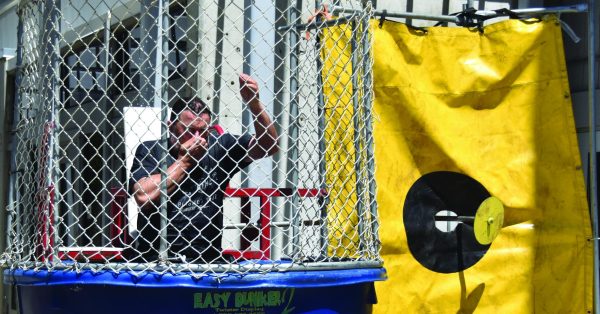Solar panels saving funds
Beneficial and efficient
Photovoltaic (or PV) Devices is an arrangement of components designed for the use of supplying electric power by way of using the Sun as a power source. Having numerous environmental benefits, PV costs less money to produce and use, which makes it more widely affordable and available. Made from various types of semiconductor materials uniquely designed or arranged in various structures, these systems can be visible in various parking lots throughout LMC and other campuses throughout the District.
In addition to colleges and campuses everywhere, the use of photovoltaic systems (derived from the Greek word “photo,” meaning “derived from light,” combined with the name of Italian Alessandro Volta, known for inventing the first battery “volt”) are continuing to grow residentially and in many other buildings throughout the state and nationwide.
Installed over five years ago, the solar panels located throughout most of the parking lots at Los Medanos College have proven to be highly beneficial and productive for all involved. Whereas conventional methods of generating electricity such as coal burning or fossil fuels can cause pollutants to enter the atmosphere, the only resource needed to power a solar device is the sun. Unlike smog forming pollutants such as carbon monoxide, which has been determined to be the main gas that causes global warming, sunlight is a clean and limitless power source. Because there are no moving parts, solar cells use a chemical reaction to operate, as a reliable, quiet, and modular power source. If installed properly and maintained well, PV systems can full function in upwards of 20 to 30 years.
“They are not scheduled to be replaced for a long time,” said Buildings and Grounds Manager Russ Holt, when asked when the solar panels at LMC were up for replacement. “These photovoltaic panels have no moving parts, which mean they can last a very long time.”
According to Mosaic, a company which connects investors to high quality solar projects, Contra Costa Community College District ranks in the top 15 solar schools in the state, with a total solar capacity of 3,200 KW. Out of the three colleges in the district, LMC currently has the most solar panels in use with four. According to data, LMC generates the most efficiency out of their solar panels between the hours of 7 AM and 4 PM, production peaking at around 12 noon. These graphs also indicate that out of all of the colleges in the Contra Costa College District, LMC generates the most power as a result of the PV devices, with the most productivity emerging from Parking Lot “C,” followed by Parking Lot “B” and Parking Lots 135 and 100.
What does all of this data mean?
The system installed at LMC as well as its sister colleges is equivalent to removing 629 off the road, or planting 636 acres of new trees every year.
While savings on a PV system can vary based on size and usage, solar power in California costs 11 to 12 cents per kilowatt hour compared to 17 to 24 cents per retail hour for retail electricity. By reducing these utility costs, the district and the campus are able to invest more money and funds back into college programs that would benefit students, as well as soften the blow of recent budget cuts that have been occurring for the past several years.
More definitive information on LMC’s solar power usage, including graphs and data, can be found at http://kiosk.utilityvision.com/content/projects/CCCCD/DesktopCompanion.aspx and http://kiosk.utilityvision.com/content/projects/CCCCD/LosMedanos/DesktopCompanion.aspx





